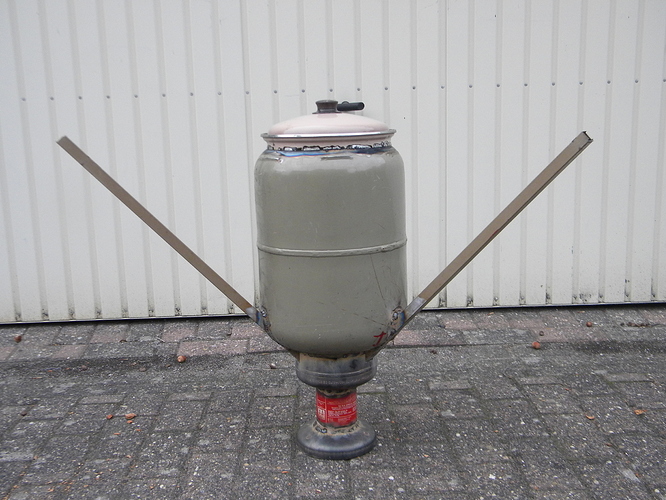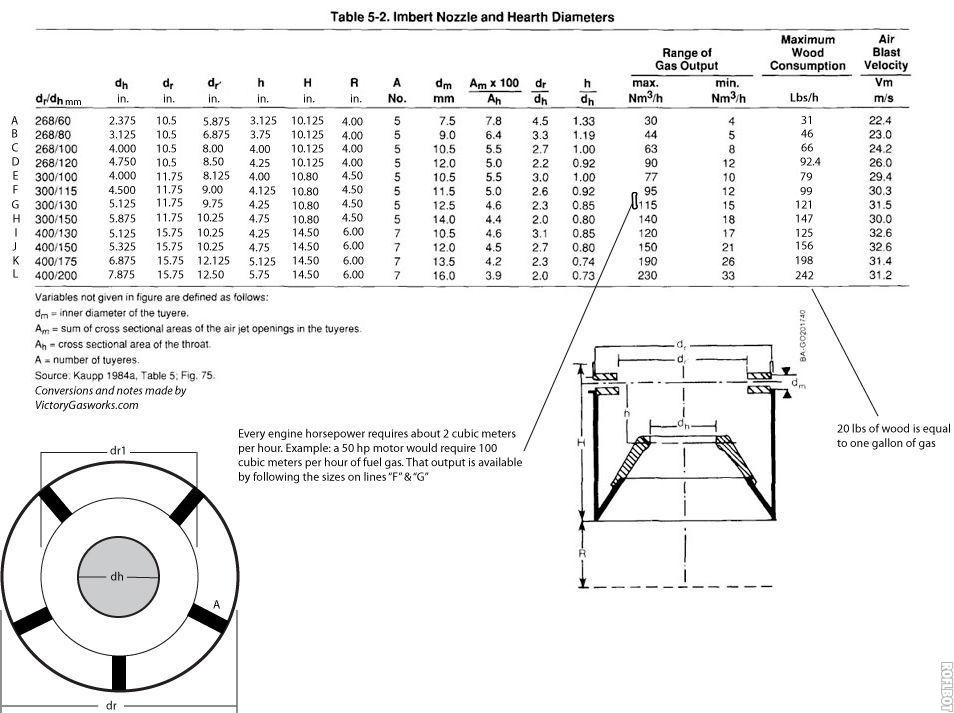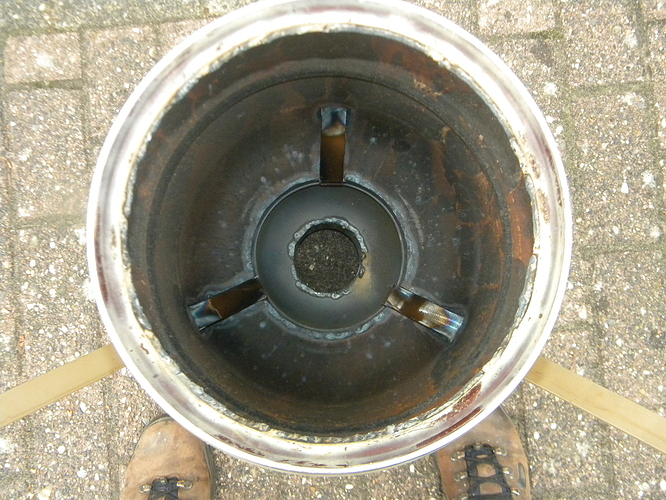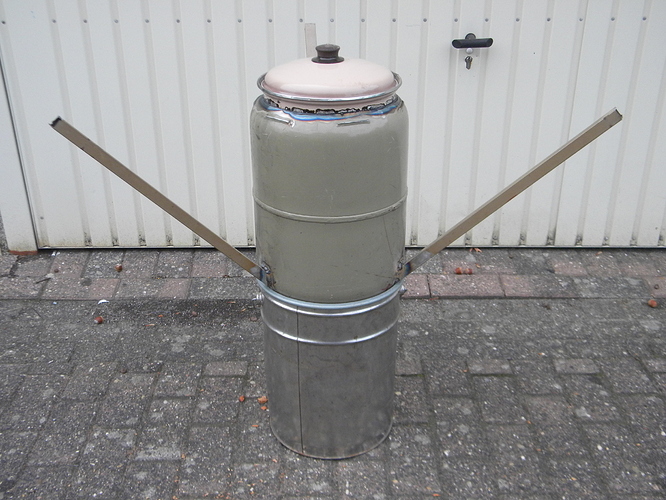Hi all, I’m new to this forum while I should have joined long ago I gues.
I want to build a small woodgas generator, and I’ve already started building one a few years ago. But I’m king of procastination, so yea. I’ve mainly watched some Youtube vids where people made their own system, and I try to follow a design used by youtuber “MrTeslonian”, where he powers an old truck. I will just downscale it alo.
Parts I’ve got:
-Propane bottle as fuel reservoir.
-Larger pan as a lid.
-Springs from a washing machine, which used to hold the drum in place. (planning on turning those into an release valve system thingy for when the reactor tries to explode)
-2 different sized fire extinguishers, as a reactor tube.
-Pizza oven pan, which is just a perforated slab of metal. It will be my grate, holding the fuel in place.
-Thin walled bucket with lid, which will collect the ash/gas.
-“Snail house ventilator” from a central heating unit. (runs on 220 volts)
-Expansion vessle from a central heating unit, which I want to turn into a cyclone filter.
-Several random bits of metal tubes, with different diameters.
-Carburetor from an 5-ish hp engine. I want to turn this into an air intake regulator, allowing more/less flow of air into the gasifier.
-Car engine radiator, not sure if I can use this due to sut/tarr buildup.
-Heat exchanger from a central heating unit, not sure if I can use this.
-Radiator part from a central heating unit, not sure if I can use this.
-Old rectangular stainless steel frying pan, might be used as a filter medium box?
-Roll of steel wool as insulation?
-Metal perforated trashcan, which I could use around the main body, holding the insulation in place.
-Brand new 6,5 hp “honda clone” horizontal shaft petrol engine.
I might have forgotten some of the parts I have in my workplace. I can buy all kinds of metal from my local scrapyard which also sells new iron. But I like to keep this very low budget.
If I get the current engine running on woodgas made from this gasifier, my GF said I was allowed to buy me a CHEAP 6500 watt generator.
I am also interested in compressing the created woodgas. I’ve read that converting the vapour into liquid is really hard, so that’s not something I’d be doing. But I can get my hands on a refrigirator compressor (low output, high pressure) and an LPG tank from a car. (50-60 bars of pressure?)
I am not a skilled mechanic, but I can kinda weld. And the holes I burn into the metal, I can get closed again. Here is a list of tools I have:
-Angle grinder.
-Flux core mig welder.
-Hand drill.
-Regular saw.
-Off-brand dremel.
-HAMMER!!!
Considering the parts I have, this will be a “winging it” project. Where I just hope it all works when done. Any suggestions/comments are welcome.
Here are a few pictures I took over a year-ish ago.
*Those pointy sticks are 3 air intake tubes, which currently point straight upwards.




